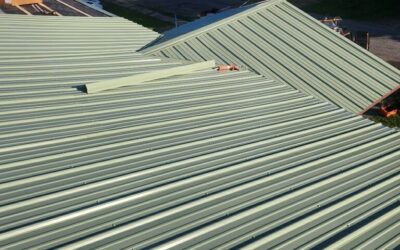Factory Roof Contractor: The Ultimate Guide for Industrial Roofing Solutions
💼 Introduction
When your facility needs a dependable factory roof contractor, you’re not just replacing a roof—you’re securing your production line, ensuring safety, and protecting your bottom line. This guide dives deep into:
- The unique demands of factory roofing
- How to choose a top-tier contractor
- Recommended materials and systems
- Maintenance best practices
- Common problems and expert solutions
Targeting industrial, manufacturing, and warehouse owners, this guide helps you navigate complex decisions and identify qualified contractors that meet your facility’s needs.
1. Understanding Factory Roofing Needs
1.1 Industrial Roofing vs. Commercial/Residential
Factory roofs have far more demanding requirements:
- Flat or low‐slope profiles – requiring custom drainage systems
- Heavy rooftop equipment – supporting HVAC units, cranes, etc.
- Thermal cycling & chemical exposure – heating, cooling, metal corrosion risks
- Frequent access & foot traffic – for routine equipment servicing
These conditions necessitate tailored roofing systems—not just off-the-shelf residential options.
1.2 Core Challenges
Four major challenges factory roofs often face:
- Ventilation & heat buildup – traps heat from machinery, causing membrane degradation and condensation unless well ventilated
- Heavy point loads – from equipment installations stressing the structural deck
- Chemical exposure – corrosive vapors can deteriorate membranes
- Access wear & tear – frequent traffic can puncture membranes and wear seals
Plus common issues like ponding, flashing failures, and wind uplift are prevalent in industrial scenarios
2. Materials & Systems for Factory Roofing
Selecting the right system is crucial. Here’s what works best:
2.1 Single-Ply Membranes (TPO, PVC, EPDM)
- TPO is popular for flat roofs—energy-efficient, tear-resistant, reflective
- PVC offers excellent chemical resistance—ideal for facilities with corrosive byproducts
- EPDM is affordable and flexible, but requires stronger waterproof welds
2.2 Metal Roofing
- Panels and standing-seam systems offer durability and reflectivity
- Capable of handling point loads via proper structural support
- 100% recyclable and energy efficient
2.3 Roof Coatings & Restoration
- Elastomeric or silicone coatings can extend roof life, seal leaks, and reflect heat
- Cost-effective over full replacements
2.4 Specialty Options
- Green roofs for stormwater and insulation management
- Cool roof membranes to reduce thermal load
- VELCRO®-style fasteners for membrane attachment in cooler climates
3. Finding & Vetting Factory Roof Contractors
Choosing the right contractor ensures longevity and performance:
3.1 Key Qualifications
- Licensed, bonded, and insured—required for industrial trades
- Trade certifications (e.g., NRCA, manufacturer-authorized installers) guarantee quality
3.2 Proven Experience
- Prior industrial or factory roofing projects are essential
- Familiarity with TPO, PVC, coatings, and structural engineering considerations
3.3 Safety Compliance
- OSHA adherence for fall protection, especially roof edge systems (
- Onsite protocols for chemical exposure and hazardous environments
3.4 Resources & Partnerships
- Proper tools: cranes, roof seamers, coatings machines Manufacturer backing and warranty support
3.5 Reputation & References
- Look for documented industrial projects similar to your facility
- Assess reviews, referrals, and case studies
4. Pre‑Installation Planning & Best Practices
4.1 Thorough Inspections
- Document existing damage, membrane failure, flashings, and drainage
- Identify structural weaknesses before replacing or recoating
4.2 Season & Schedule Planning
- Avoid cold-season delays with compatible materials like VELCRO® fasteners
- Plan access around production schedules to minimize disruption
4.3 Drainage & Ventilation Strategy
- Design tapered insulation for water run-off and prevent ponding
- Incorporate vents and reflective membranes to reduce heat stress
4.4 Detailing & Flashing
- Ensure water-tight flashings around HVAC, skylights, gaps, and even rooftop cranes
5. Maintenance & Monitoring
5.1 Routine Inspections
- Semi-annual formal inspections, plus post-storm or high-traffic checkups
5.2 Preventing Ponding & Debris
- Clean drains, scuppers and gutters—24–48 hr ponding weakens membranes
5.3 Access Control
- Limit personnel and equipment entry; designate protected walkways or pads
- Schedule maintenance during favorable weather
5.4 Prompt Repairs & Recoating
- Address leaks, punctures, or seam failures immediately
- Reapply coatings every 5–10 years to preserve membrane integrity
6. Common Industrial Roof Issues & Fixes
- Leaks – trace from the source, often flashing or puncture
- Ponding Water – solve via drainage optimization or tapered insulation
- Membrane punctures – prevent with walk pads, fix with patching or overlays
- Flashing failure & joint leaks – maintain seals, rerun heat-welds
- Wind uplift – secure seams and edges per uplift zone specs (
- Chemical degradation – specify chemically resistant membranes in production zones
7. Warranty, Longevity & ROI
- Single-ply roofs: 20‑30 years; metal roofs: up to 50‑100 years
- Warranties: factory-backed manufacturer materials + workmanship
- Preventive maintenance can extend service life well beyond initial timelines
8. SEO Optimization Strategy
Keywords targeted:
- factory roof contractor
- industrial roofing contractor
- factory roof repair
- commercial/industrial roof maintenance
- factory roof insulation/ventilation
Content techniques:
- Multi-region targeting (e.g. Midwest, Northeast, Texas plants)
- Long-tail anchors like “industrial TPO roofing contractor”
- Regular blog updates: case studies, seasonal tips
9. FAQs
Q: How much does a factory roof cost?
A: Varies widely—TPO/PVC systems average $5–10/ft², coatings $1–3/ft², metal + insulation $7–15+/ft² based on scope.
Q: Can roofing be done without halting production?
A: Yes—modular scheduling, night/weekend work, interior-height lifts, and protective barriers allow minimal impact.
Q: How to qualify a contractor?
A: Verify industrial experience, certifications, project portfolio, OSHA compliance, and equipment availability.
Q: What safety measures are mandatory?
A: OSHA fall protection (guardrails/harness), chemical PPE, edge fall protection systems
Conclusion
Securing a trusted factory roof contractor ensures your industrial asset remains safe, productive, and cost-efficient. The key steps include:
- Evaluating industrial experience & certifications
- Selecting a robust roofing system (single‑ply, metal, coating)
- Planning around facility use & climate
- Maintaining routine inspections & repairs
- Maximizing lifespan with proper warranties
A well-installed industrial roof safeguards your operations for decades—protect your facility by choosing excellence every step of the way.
 (440) 307-2060
(440) 307-2060


